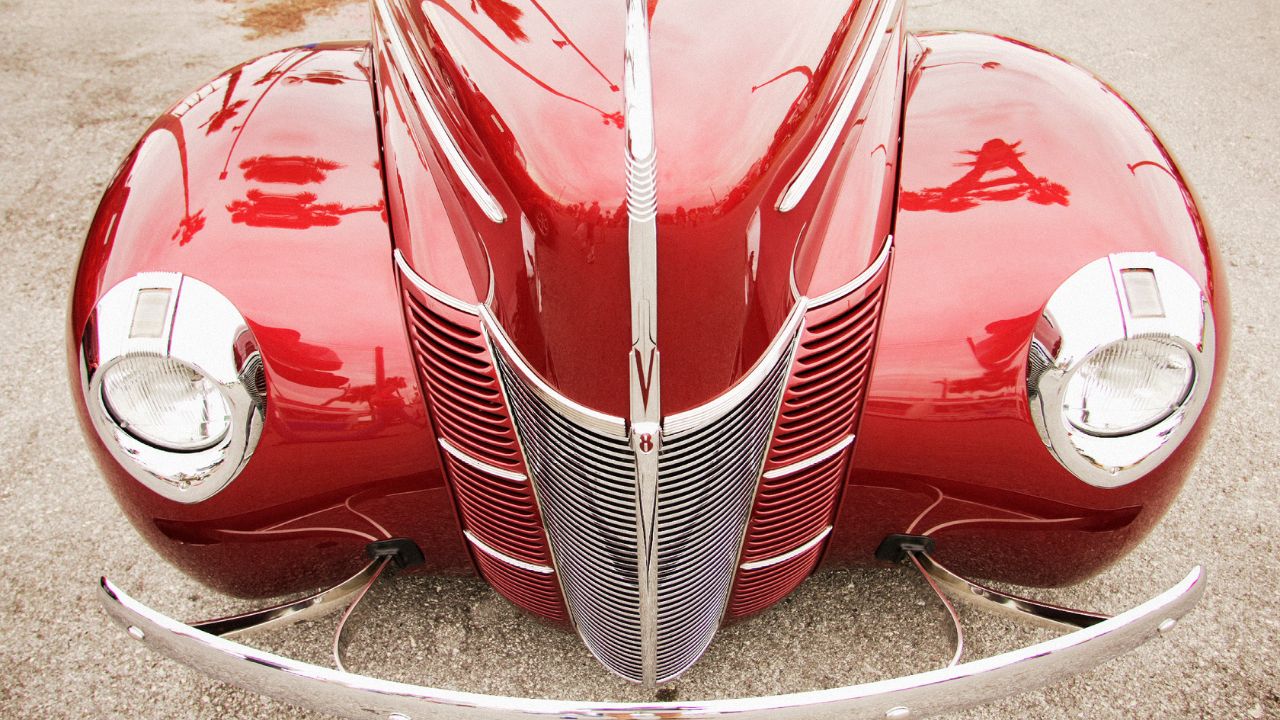
Texas has many classic car options. Due to the large number of classic cars that are available by owner, potential buyers have many options. This makes it easier for them to find the car they want. Before buying a classic car, however, it is important to research the taxes, insurance, and other factors that may affect the purchase. Here are some tips to help you find a Texas classic car.
Texas: Buying a Classic Car
There are many reasons to buy a Texas classic car. According to Texas' DMV there are currently 187,958 registered antique cars in Texas. This represents a 27% increase over the December 2009 figure. It is important to note that these vehicles aren't practical for everyday driving. It is important to understand the restrictions and requirements that antique cars in Texas must meet before purchasing one.

Classic cars generally refer to cars older than 20 year old. Those older than 45 years are classified as antiques. For example, vintage cars are vehicles built between 1919 and 1930. The state DMV and insurance agencies may vary in how these cars are classified. Please check local laws before buying. You should also remember that, while it's important for a classic car to be restored, it's equally important to keep it in its original condition. If you decide to buy a vintage car, you can still make modifications to it.
Taxes on vintage cars
Classic vehicles are subject to a 4 percent tax, which is why they are not allowed to be driven for pleasure or exhibition purposes. The state requires that they are registered and have a Title. Texas's taxes for classic cars are considerably lower than other states. The registration fee is usually $10, depending on how old the car is. Additionally, these vehicles are not subject to safety or emission regulations and may only be registered for exhibition purposes. To protect their car's value, owners can buy surety bonds.
Texas requires that the classic car be at least 25 years-old and be registered for 2 reasons. First, a vintage car must be older than 25. It is not required to have a registration for the first 3 years. Then, you must pay the $10 registration fee to have your vehicle registered in Texas. You must also pay a $10 registration fee for an antique car, which is only allowed to be driven at special events and exhibitions. Texas is 37th in road quality. This means it has some the worst traffic.
Insurance for classic cars
There are many options when it is time to buy insurance for your classic vehicles. But the coverage you choose will depend on which company you go with. Your driving record and your needs will impact the coverage. Some insurance companies may also restrict the amount of mileage you drive each calendar year. For more information about your particular needs, contact your insurance agent. These are some tips to consider if you're looking for classic Texas car insurance.

A policy that covers agreed value is one option you should consider when looking for insurance. An agreed value policy will cover the cost of replacing your classic car in the event it is destroyed by an accident. Collector cars are more likely to benefit from this type of coverage than regular cars. They appreciate in value over time. A policy that covers the agreed amount is the best option. However, this could not always be enough. If you plan to keep the car, consider a lower mileage plan. It will ultimately cost less. Another option is to opt for a policy that pays spare parts for any repairs you make.
FAQ
How long is an automotive course?
An automotive course lasts for three years.
The first year of your training is devoted to theory. You will learn all about cars. The second year is dedicated to practical training, where you will learn how to fix cars, drive them, and do other jobs around the car. The final year includes a placement at an auto shop. This gives you real-world experience fixing real problems.
Is it hard being a mechanic apprentice
It's not simple, but you can learn quickly and there are many avenues for advancement.
You must have patience and perseverance. You should also be able to repair cars, trucks, and motorbikes.
Customers and relatives can exert a lot on you. But you should never feel pressured into making decisions you aren't comfortable with.
It could be a great job choice if you love fixing cars. This job allows you to make a decent wage and build up your company.
However, you might prefer to go down another route. You might consider becoming a technician in this instance.
This means that you can use your technical knowledge to help other workers. Technicians could benefit from your technical expertise to solve problems or teach new techniques.
Another option is to be a service advisor. Here, you'll provide advice and assistance to customers when they bring their cars to a garage.
The decision you make will depend on what you are looking for. There are many options, so you can choose the one that suits you best.
What is the best career for an automotive mechanic?
If you are determined to excel, the automotive industry offers many opportunities. Working hard and learning from others is the best way to be successful in this field.
Because you will be spending most of your time communicating with customers and employees, you will need excellent communication skills. You should also be willing to travel and work long hours, making commuting difficult.
You can take classes at universities and community colleges if you are interested in a career as an automotive technician. Many schools offer programs designed specifically for students interested auto repair, sales, and customer services.
If you decide to pursue a degree, you should study mechanical engineering. You can get your bachelor's degree in as little as four years.
Many companies will hire students straight out of college. So, it is wise to begin searching for employment while you are still able to study part time.
After you've finished your education, it's likely that you'll need to go through some training before you can be hired as an auto technician.
This means that you will need to pass tests such as the Automotive Excellence (ASE) certification exam. This test covers topics such engine maintenance as brakes, steering, suspension, etc.
Once you've passed the ASE test, you can apply for a license issued by the National Institute for Automotive Service Excellence.
A license permits you to repair private vehicles. Based on the services rendered, you will receive compensation.
It is important to remember that not all states require licensing. You will need a license if you want to work in a different state.
Some states won't issue licenses until you have completed a certain amount training. If this is you, you may need another option.
Does it matter what college I go to?
Non, really. There is no difference in the programs offered by colleges for getting into automotive work. But, there are better programs at some schools than others. Look elsewhere if you want something more niche.
Is it possible to work as an automotive mechanic?
Yes, it's possible. Many garages advertise their vacancies online, and many people apply just because they think it might be fun. To get your foot in front of the door, try applying for a few positions to see if any accept student applications. Alternatively, you could ask friends and family if they know anyone who works in the industry. They might be happy to recommend someone.
Statistics
- Apprentice mechanics earn significantly less hourly than mechanics who have completed training, with a median wage of approximately $14.50 an hour, according to PayScale. (jobhero.com)
- The U.S. Bureau of Labor Statistics (BLS) reports that the job outlook for automotive service technicians and mechanics is expected to decline by 4% from 2019 to 2029. (indeed.com)
- According to the BLS, total auto technician employment is expected to exceed 705,000 by 2030. (uti.edu)
External Links
How To
How to correctly diagnose your vehicle for repairs
You should first examine the symptoms your car is showing to determine if it requires repairs. Next, you can follow these steps in order to diagnose your car.
-
Check engine lights. Check the dashboard light indicators such as the engine light indicator, the oil pressure gauge, the battery light indicator, the coolant temperature gauge, and the RPM gauge. It could indicate that your vehicle is having problems.
-
Inspect the tire treads. Tire wear can lead to problems in handling and brake performance. You should also inspect the wheel treads. They should look clean and be smooth. The best way to do this is to remove the wheels and take them off. Use a flashlight to see how well the treads are worn.
-
Check the level of brake fluid. Keep track of the brake fluid level in your vehicle. This will ensure that your brakes run smoothly. Your brakes may fail if the brake fluid level drops.
-
Make sure to test the suspension system. Vehicles usually have a suspension system that helps absorb shocks and vibrations while driving. This suspension system provides greater control and smoother acceleration and deceleration. A suspension problem can cause your vehicle to feel wobbly and shake uncontrollably. You can test if your vehicle has a suspension problem by putting weight on either the front or back axle to see how it moves.
-
Examine the steering column. The steering column connects the steering wheel to all other components of the vehicle. Many accidents can cause damage to steering columns. Replace it if your steering column feels loose or unsteady.
-
Observe the exhaust pipes. Exhaust pipes help move gases from the combustion chamber to the atmosphere. Exhaust pipes that are cracked or leaking can allow harmful fumes to enter your cabin. You should also fix any bent tailpipes immediately.
-
Take a look at the underside of your hood. To check for unusualities, look under the hood. Fluids could be leaking from your engine. A professional technician should be contacted if your engine compartment emits an unusual smell.
-
Make sure to check the air filter. The outside environment can collect dust and other debris in your vehicle's air filters. Your vehicle will run less well if it has a dirty filter. Replace your air filter regularly.
-
The fan belt should be checked. The fan belt is the link between the engine and the transmission. If it breaks, the engine won't turn over. It's easy to replace the belt. You only need a screwdriver or pliers to replace your belt.
-
Make sure you inspect the radiator hoses and hoses. The radiator hose is used to carry water from the radiator to your engine. It can crack or become damaged and leak hot liquid onto an engine. The hose can be repaired with a pair or needle-nosepliers, and a wire brush.
-
The windshield wipers should be checked. Windshield wipers use electricity for snow and rain removal. They can leave streaks on your windows glass if they stop working. To fix the problem, simply change the washer fluid.
-
Check the battery cables. The batteries provide power to the electrical systems within your car. When you replace batteries, make sure to disconnect the negative cable first. Failure to do so can damage your alternator.
-
Be sure to check your headlights. The headlights will illuminate the road ahead. If they don't work properly, it can cause poor visibility. Check the bulbs to see if they've burned out.
-
Always check your lights. Lights warn other drivers when you approach them at night. You could be distracted and cause an accident if one does not work.
-
You should inspect your brakes. Brakes slow down your vehicle before a collision. You may lose control of your vehicle and crash if the brakes don't function properly.
-
Change your oil. Your engine will stay lubricated by the oil. It protects metal parts and prevents them from wearing too quickly. It is recommended to change the oil each month.